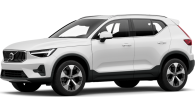The Toyota Fortuner has always been a solid seven-seat 4WD, but this ute-based wagon has never reached anywhere near the sale heights of Toyota’s LandCruiser, Prado and HiLux.
Well, the new-generation Fortuner is here and it has revised styling, more power and torque, increased towing capacity, improved fuel consumption, more safety tech, and a bigger multimedia screen.
But there’s also a price rise to go with those changes. And the question remains: Is the Fortuner worth your money?
Read on.
Toyota Fortuner 2021: Gx
| Engine Type | Diesel Turbo 4, 2.8L |
|---|---|
| Fuel Type | Diesel |
| Fuel Efficiency | 7.6L/100km (combined) |
| Seating | 7 |
| Price From | $43,890 - $51,040 |
| Safety Rating |
|
Does it represent good value for the price? What features does it come with?
The Fortuner 4x4 diesel GX, which we tested on this occasion, is the base spec of the three-variant Fortuner line-up.
Our test vehicle has a few extras – including a sat nav pack ($1000), premium paint (feverish red, $600) and a towing package (towbar, wiring, tow ball $1143.51), so the price as tested ($51,823.50) is a little more than the Manufacturer Suggested Retail Price (MSRP) of $49,080, previously $45,965. The GX price has increased by $3115.
.jpg)
All Fortuners have an upgraded 2.8-litre four-cylinder turbo-diesel engine, a six-speed automatic transmission, part-time four-wheel drive and a rear diff lock.
Standard features on the GX include cloth seats, 17-inch alloy wheels on all-terrain tyres, as well as a new 8.0-inch multimedia screen (that’s an 1.0-inch bigger than the previous unit), air-conditioning, a six-speaker stereo system, plus front and rear parking sensors.
.jpg)
New driver-assist tech includes upgraded autonomous emergency braking (with vehicle and pedestrian detection day or night plus daytime cyclist detection), lane departure alert with steering assist, and high-speed adaptive cruise control.
The Fortuner line-up also now has Apple CarPlay and Android Auto.
Maximum braked capacity is up 300kg, from 2800kg to 3100kg.
Is there anything interesting about its design?
The previous Fortuner was looking stale and its interior didn’t set any hearts a-racing either.
.jpg)
The Fortuner’s very-welcome styling refresh has mostly involved ‘sexing up’ the front end with a revised black grille, sleeker LED light arrangements, and a tough-looking and pronounced skid-plate – but please note that while that skid-plate looks rugged, it doesn’t feel like it could cope with much of a knock.
Overall, I reckon the Fortuner looks better than it did before.
.jpg)
As mentioned, that exterior colour is feverish red, if you’re interested, and it costs $600.
What are the key stats for the engine and transmission?
The Fortuner’s new version of its 2.8-litre four-cylinder turbo-diesel engine now produces 150kW at 3400rpm and 500Nm at 1600-2800rpm – that’s a 20 kilowatt and 50 Newton-metre increase over the previous Fortuner.
.jpg)
It's matched to a six-speed automatic transmission, and the combination works better than it did previously, no longer a sluggish-feeling combo, it now has a fair bit of zip about it.
The 4WD set-up is very effective, with good low-range gearing, a quietly efficient off-road traction control system and a rear diff lock.
How practical is the space inside?
The GX is the entry-level Fortuner so it has a basic cabin, but that’s okay with me.
The biggest news, in terms of changes to the interior, focus on the new 8.0-inch multimedia screen, an 1.0-inch bigger than the unit in the previous Fortuner.
.jpg)
From the rear to the front of the cabin, it’s a rather practical space, with cloth seats, carpet floors (topped with rubber mats, if that’s your fancy) and durable plastic surfaces.
The interior is about function not fashion.
The Fortuner’s seven seats are in a 2-3-2 configuration. The 60/40 split-fold second-row seat has a one-touch, tumble feature while the 50/50 third-row seats are stowable, sort of.
_0.jpg)
Boot space is claimed to be 200 litres with the third-row seats in use, and in that area there are cargo hooks and a 12V socket.
Stow away the third-row and cargo space increases to 716 litres but the seats reduce your real load space and they also obscure a lot of driver vision to the rear.
With the second-row down and mostly out of the way, there’s a claimed 1080 litres of cargo space.
It’s pretty ordinary back here – the seats are flat and unsupportive – and, even for a vertically-challenged bloke such as myself, the space back there is on the wrong side of squeezy.
All three rows get aircon – there are ceiling-mounted vents – and there are a few handy storage spaces in the third row, but no cup-holders.
It’s reasonably comfortable in the second row; I sat behind my driving position and I had plenty of head and knee room.
.jpg)
The second row has cup holders in this fold-down armrest, ceiling-mounted controls for the aircon, and two ISOFIX and three top-tether anchor points.
Up front, there’s now an 8.0-inch upgraded multimedia system, with USB-connected Apple Carplay and Android Auto, and a 4.2-inch colour driver’s display.
.jpg)
There are the usual storage spaces – including glovebox, centre console, tray for your smartphone, pop-out cup-holders on the outboard edges of the dash – and as well as a USB port and a 12V socket for charging purposes.
What's it like as a daily driver?
Much better than it was before.
For those of you into measurements, the GX is 4795mm long with a 2745mm wheelbase. It is 1855mm wide, 1790mm high and it weighs 2130kg. It has a 11.6m turning circle.
On-road, the Fortuner is now pretty good for a ute-based wagon – well, it’s better than it was before, anyway.
It’s all sitting on a HiLux ladder-frame chassis, so the Fortuner does have a very firm ride, bordering on harsh at times. Having said that, you do get used to it quite quickly and the Fortuner's coil-spring suspension set-up does manage to mostly take the full sting out of surface irregularities, except for more severe dips and bumps.
.jpg)
I dropped the too-high air pressures (40 psi, pounds per square inch) on the Dunlop Grandtrek ATs (265/65R17) to a more agreeable road-running 32 psi and that further softened the ride.
Driver position in the Fortuner is commandingly high and there’s ample visibility – although the A-pillars are still bulky and the third-row blocks vision to the rear when it’s folded up to the sides.
It’s generally quiet although there remains noticeable wind noise around the wing mirrors as there was in previous Fortuners and engine noise builds to a piercing pitch when you go heavy on the right boot.
.jpg)
Steering – a new variable-flow power-type set-up – is a whole lot better than the old arrangement. It’s now sharp, light, and precise and changes to suit the speed – a big improvement. The steering wheel is reach- and rake-adjustable.
Acceleration, from a standing-start or for overtaking, is still a bit laggy although that extra power and torque do come in handy during those moments and general driving though, making the Fortuner much more drivable all-round.
The unchanged six-speed auto is still generally right for the job, but it downshifts quite harshly every now and again, especially when going up or down long, gradually sloping highway stretches.
What's it like for touring?
The Fortuner is a very capable 4WD and I reckon a lot of Fortuner owners would be rather surprised at just how capable it is off-road. While it is marketed as a family-friendly tourer rather than a rock-crawling monster, the truth is it is pretty handy on the rough stuff.
Before we get stuck into the nitty-gritty, it’s worth mentioning the Fortuner’s off-road measures: ground clearance (216mm), approach angle (29 degrees), departure angle (25 degrees), rampover angle (23.5 degrees), and it has a listed wading depth of 700mm.
.jpg)
On the way to our 4WD testing and proving ground, along a lightly corrugated and rutted dirt track, the Fortuner’s ladder-frame chassis yielded a very stiff, firm ride, juddering and jarring through surface imperfections. But, again, it’s something you do actually get used to.
The Fortuner’s switchable 4WD system has two-wheel drive (H2), and high- (H4) and low-range (L4) four-wheel drive. There’s plenty of low-end torque for no-fuss low-speed off-roading and the turbo-diesel engine, so unhurried, keeps the Fortuner trucking, without any hassle.
That torque is on tap across a wide rev range, giving you the confidence to get through or over most natural obstacles.
.jpg)
The off-road traction control system limits any wasteful wheel-spin and sends torque to the tyres that actually have some traction, in order to keep you moving along. It’s a quietly effective set-up.
And you can also hit the rear diff lock button to engage that, for more help in the traction stakes.
Engine braking is good, keeping the Fortuner to a controlled sustained momentum on downhill runs.
.jpg)
The GX does, however, miss out on the downhill assist control system which the GXL and Crusade get, but that's not a big minus because it gets comfortably by with the 4WD set-up it has as its disposal.
Wheel travel is pretty decent and if you can get the full extent of suspension flex, and drop any mid-air tyres to the dirt for some more traction, that’ll help to get you moving along safely again.
The standard Dunlop Grandtrek AT tyres are about the only real weakness in the Fortuner’s off-roading gear. They are all-terrains and they’re not bad, they're just not quite aggressive enough, with enough sidewall bite, for my liking.
.jpg)
But as with the previous Fortuner, the mechanicals are fine – its 4WD set-up is very effective – but you have to be mindful of the fact that it doesn't have a whole lot of ground clearance (a claimed 216mm) and the side steps are prone to hitting on the edges of steep and deep ruts, but those factors are easily overcome through considered driving and the purchase of more aggressive tyres.
New Fortuners have a diesel particulate filter (DPF) Diesel Particulate Filter switch, so you can do a forced burn-off yourself to hopefully avoid any DPF issues. Don’t have any idea what I’m talking about? For more on Toyota’s DPF issues, read carsguide.com.au.
The Fortuner has a 750kg unbraked towing capacity and 3100kg braked towing capacity – that’s 300kg more than the previous version of the Fortuner.
How much fuel does it consume?
Fuel consumption is a claimed 7.6L/100km on a combined cycle – that’s 1.0L/100km less than the previous-generation Fortuner.
Our actual fuel consumption on this test was 9.3L/100km.
The Fortuner has a 80-litre fuel tank.
Warranty & Safety Rating
What safety equipment is fitted? What safety rating?
All versions of the Fortuner have a maximum five-star ANCAP safety rating, based on the latest 2019 standards.
Safety gear includes seven airbags, autonomous emergency braking (with vehicle and pedestrian detection day or night plus daytime cyclist detection), two second-row ISOFIX child-restraint anchorage points and three top tether anchor points, reversing camera and rear parking sensors, high-speed active cruise control, lane-departure alert with steering assist, and road sign recognition.
What does it cost to own? What warranty is offered?
The Fortuner range has a five-year/unlimited kilometre warranty. Service intervals are scheduled for every six months/10,000km and cost of service is $250. The capped price servicing is up to three years/60,000km, so the first six services.
Verdict
The new Toyota Fortuner is a family-friendly wagon that is still a very capable 4WD, but it’s also much nicer to drive on-road than the previous-generation version.
It’s practical and easy to live with as a daily driver, and in GX spec it makes a lot of sense as a basic, functional off-road tourer.
Toyota has once again seemingly done the bare minimum to keep buyers happy but these few small changes have made a huge difference.
Pricing Guides








.jpg)
.jpg)
.jpg)
.jpg)
.jpg)
.jpg)
.jpg)
.jpg)





































.png)








.png)




.jpg)
.JPG)



